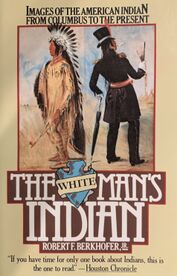Federalism and its Implications on Various Minority Groups
The Emergence of Federalism

Federalism is a democratic institution wherein different levels of government in a country are responsible for varying tasks[1]. In short, specific tasks are the responsibility of specific governmental structures in countries that practise federalism. In Canada, federalism is a form of government where responsibilities are distributed between the federal and provincial governments[1].
This is exemplified in that, specific tasks, such as defence, fall under federal jurisdiction, and other tasks, such as education, are within the provincial jurisdiction. Federalism was established in Canada when the British North American Act was signed in 1867, wherein the British monarchy granted Canada the autonomy to form its own independent country as a constitutional monarchy [1]. The first Prime Minister of Canada, Sir John A. MacDonald, was not in favour of this government form and had preferred a system in which the federal government had more authority over provinces [1]. This division between federal and provincial jurisdiction was created mainly because the provinces were wary of joining Canada and due to preexisting colonial tensions between French-speaking Quebec and English-speaking Canada[1]. This tension led Quebec to be unwilling to give total authority to the federal government.
Today, as a geographically and politically diverse country of this size and variation, the government of Canada is better able to function efficiently by spreading out responsibilities amongst the different levels of government[1]. It is also argued that federalism is most efficient when the general population can hold one particular governmental level accountable for their actions.
Racial Minorities and Women in Positions in the Government
Canada prides itself in being a diverse and welcoming country. Diversity is considered a sign of success in terms of racial integration into the population. It is, however, argued that although the former is true, people of colour who are in government do not get similar authorities as those who are Caucasian[2]. As well as this, there is less representation, and even fewer people of colour placed in higher positions of power in the government[2]. This lack of representation in the various governmental levels transcends into a lack of decisions that include and emphasize equity amongst racial minorities and others.
In scholarship thus far, the relationship between gender and the government has been portrayed as controversial and clashing. It is overlooked that female views in governmental decisions serve as a means of gaining new perspectives[3]. Putting women in positions of power, at some of the highest levels of government in the country is an effective means to ensure that women have a voice in the decision-making processes that take place from province to province, and across the country[4]. Elected women can argue and advocate for various gender equality and women’s issues across provinces, ensuring that legislative agendas take the lives of women into account[4].
There is little scholarship to date that discusses gender in relation to federalism. Additional scholarship in this field of knowledge would shape an understanding of how a feminine perspective can shape public policies in the various levels of government[5].

Federalism and its Effects on First Nations Issues
The First Nations peoples of Canada have suffered a long history of trauma and mistreatment as a result of colonialism[6]. In The White Man’s Indian: Images of the American Indian from Columbus to the Present by Robert F. Berkhofer (1979), the construction of the term “Indian” and the stereotypes people associate First Nations communities with, as a result of colonialism, are brought to light[7]. The long-term effects of colonialism are seen today wherein drug addiction and mental health issues riddle the First Nations population of Canada, and stereotypes persist against this population[6].
Relating to federalism, First Nations relations are a part of both the federal and provincial jurisdiction. This is because First Nations peoples are dispersed throughout Canada, and different tribes are a part of different and geographically diverse provinces[8]. Likewise, the issues that these groups face vary, depending on the location of their nation. Governments have overlooked these issues, or have not addressed these issues with the severity required to combat against the atrocities that these communities continue to face[9]. This clarifies that, although responsibility is given to all levels of government, necessary measures are not being taken to ensure that First Nations individuals are able to lead effective lives[9]. Federalism would be beneficial if the responsibility was given to one particular level of government. By providing this responsibility to two different levels of government, it is more difficult to hold one government, or person, accountable.
References
- ↑ 1.0 1.1 1.2 1.3 1.4 1.5 Stevenson, Garth (2013). "Federalism". The Canadian Encyclopedia.
- ↑ 2.0 2.1 Gerken, H. (2014). "The Loyal Opposition". The Yale Law Journal – via JSTOR.
- ↑ Simeon & Radin (2010). "Reflection on Comparing Federalisms: Canada and the United States". Publius. 40: 357–365 – via JSTOR.
- ↑ 4.0 4.1 Krook & O'Brien (2012). "All the President's Men? The Appointment of Female Cabinet Ministers Worldwide". The Journal of Politics – via JSTOR.
- ↑ Vickers, J. (2013). "Is Federalism Gendered? Incorporating Gender into Studies of Federalism". Publius – via JSTOR.
- ↑ 6.0 6.1 "8 Key Issues for Indigenous Peoples in Canada". Indigenous Corporate Training Inc. April 26, 2019.
- ↑ Berkhofer, Robert F. (1979). The White Man's Indian: Images of the American Indian from Columbus to the Present. Vintage.
- ↑ Parrott, Zach (2019). "Indigenous Peoples in Canada". The Canadian Encyclopedia.
- ↑ 9.0 9.1 Pappillon, M. (2012). "Adapting Federalism: Indigenous Multilevel Governance in Canada and the United States". Publius – via JSTOR.